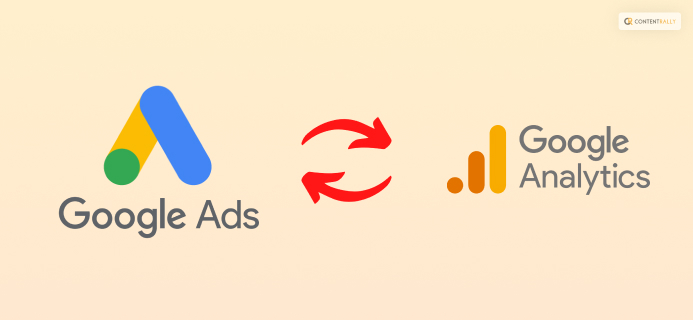“What is not a benefit of Google Analytics Remarketing?”
When you are looking for the answer to these questions, you need to have a basic knowledge and understanding of Google Analytics remarketing. Here, in this article, I will give you an insight into that, along with giving you the answer.
First, I will give you the answer, and then we will talk a little more about Google Analytics Remarketing. So, let’s get started now.
What Is Not A Benefit Of Google Analytics Remarketing?
Now it is time to answer the question and the answer is;
Allowing customers to reorder the item quickly that they have bought previously.
Google Analytics Remarketing: What Does It Mean?

There are some people who are engaged with your website already, and that is already consolidated with Google analytics. That means Google analytics has already collected much data on the user’s behaviors.
Here, the possibility of transforming those potential customers who have already visited your website’s product page or your website will automatically increase.
Now, suppose you are using the data pieces of Google Analytics in order to retarget those users who have already engaged with your website. This is termed Google analytics remarketing.
For Google Analytics remarketing, it is a must to connect a Google Analytics account along with your Google ads account.
Link Google Ads With Google Analytics

From the above discussion, we get to know that you need to link your Google Analytics with Google ads. Now, I will geode you with that.
- You first need to open your Google ads account and then select the “Tools and Settings” option.
- There, find the option “Linked Accounts” and select that.
- A list of several Google products, along with some third-party products, will open. In Google Analytics (UA) option, select “Details.” a popup will open, and with just some clicks, you will be able to link your google Analytics with Google ad.
Now, you will be able to cross-verify Google Analytics and Google ads linking by checking Google Analytics.
Here Is a guide for that also. Just open Google analytics and then go for the option “admin” at the bottom left corner. There, you will find the “Google ads linking option.”
Read More: Content Marketing Campaign Strategy For Small Business
Advantages Of Google Analytics Remarketing

Till now, Google Analytics remarketing, linking Google ads with Google analytics, everything sounds just fine. But you must know the advantages that you can utilize.
Suppose a customer visits your site with the intention of buying a product. The individual will add products to the shopping cart, and then for any random reason, the individual fails to finish the final checkout in order to complete the process.
Statistics say that the rate of cart abandonment is 88.05%. That means, across the globe, a percentage of people abandon shopping carts. These people don’t convert.
But, those customers who have abandoned shopping carts are actually potential customers, and they can be transformed in the remarketing campaign. If you can retarget those customers, your conversion rate will be high.
Basically, you can re-engage with all those customers who have expressed genuine keenness in your services and products in a remarketing campaign. Let’s understand this concept with an example.
Natasha saw a party dress and visited your website. She is highly interested in buying a party dress for her bachelorette. Now, she selected a dress and added them to the shopping cart. She found out that she doesn’t have her credit card with her.
Now, she is closing the site and thinking about buying it next time. Here, we can say that Natasha is indeed a potential customer.
Now, imagine what if you show her the same product that she had added to the shopping cart. What do you think? Will Natahs buy that or not?
Absolutely yes, Natasha will buy that dress because she is a hungry customer and also has an event soon, which means her buying intent is very strong. Just like this, there are several other customers who do the same thing.
They left or abandoned the shopping cart for some reason, and then you will have a very filtered audience list to target.
Now, here, what’s the role of Google?
Google will display the ads on the partnered websites, which your potential targeted customers are likely to visit for entertaining or gaining knowledge purposes. When they see similar products that they saw a few days back, then their desire to purchase that product will increase.
And this desire compels them to purchase the products.
Google Analytics Remarketing: Why?

Everything till now is fine, but as you are looking for the answer, I think you are thinking about opting for Google analytics remarketing. And In case you are not, here are some major reasons why you should try it.
- Over time the conversion rates increase in remarketing campaigns.
- Although the click-through rate may get lesser a little, the conversion rate will surely be high.
- In case the customer has already interacted with your products or services but didn’t buy them due to some reasons, the remarketing campaign works best.
- All those individuals who have seen your ads several times during that time would not be able to make the buying decision, and they convert immediately.
- Now, come to the major point, when they get free time, they forget your brand or company name once they visit any website and see the product they desire to purchase. Then they purchase it quickly.
- To be honest, the Google display network provides one of the greatest reaches. GDN reaches around 90% of internet users. For running remarketing ads, GDN is actually really efficient.
Final Talks
So along with getting the answer to the question, “what is not a benefit of google analytics remarketing?” Basically, it lets users reorder the products that have already been purchased by the individual. I believe after going through this article; you get the required knowledge.
In case you have any questions or queries, feel free to reach me through the comment section. I will get back with the collusion as soon as possible.
Read Also:






















